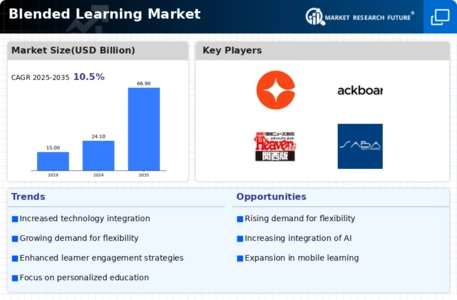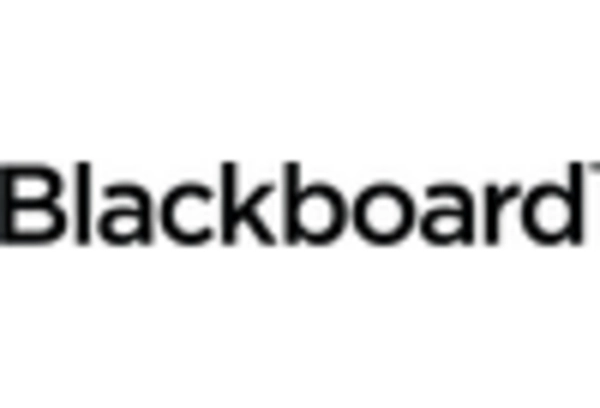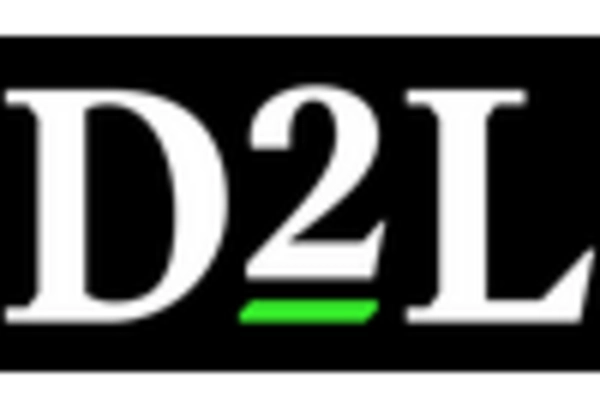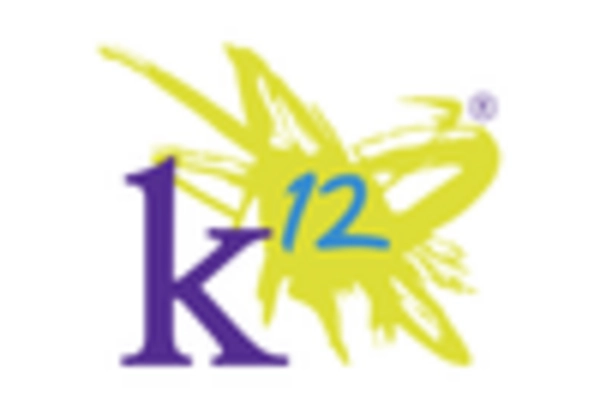Leading market players are investing heavily in research and development in order to expand their product lines, which will help the blended learning market, grow even more. Market participants are also undertaking a variety of strategic activities to expand their global footprint, with important market developments including new product launches, contractual agreements, mergers and acquisitions, higher investments, and collaboration with other organizations. To expand and survive in a more competitive and rising market climate, blended learning industry must offer cost-effective items.
Manufacturing locally to minimize operational costs is one of the key business tactics used by manufacturers in the blended learning industry to benefit clients and increase the market sector. In recent years, the blended learning industry has offered some of the most significant advantages to medicine. Major players in the blended learning market, including Pearson Education, McGraw-Hill Education, Blackboard Inc., Skillsoft Corporation,D2L Corporation, Cornerstone OnDemand Inc., NIIT Limited, City & Guilds Group, Saba Software Inc., and others, are attempting to increase market demand by investing in research and development operations.
McGraw-Hill Education is a leading educational publisher that provides a wide range of educational materials, digital solutions, and services for students, educators, and professionals. The company offers learning resources across various subjects, including K-12 education, higher education, professional development, and healthcare education. McGraw-Hill Education is known for its commitment to creating innovative and personalized learning experiences. The company's products include textbooks, digital learning platforms, e-books, and educational software designed to enhance the teaching and learning process. February 2020- A contract was inked by McGraw-Hill and Proctorio, a company that offers a learning integrity platform.
For exams on its McGraw-Hill Connect Digital Learning Platform, McGraw-Hill will make use of Proctorio's remote proctoring and browser lockout features. These services will begin in the fall of 2020 and will first be for college courses.
Smart Sparrow specializes in adaptive e-learning technology, providing solutions that enable the creation of personalized and adaptive learning experiences. Their platform allows educators and content creators to design interactive and adaptive online courses, tailoring the learning experience to individual students' needs. Key features of Smart Sparrow's platform include adaptive assessment, scenario-based learning, and analytics to track student progress. January 2020- Smart Sparrow, a provider of adaptive learning platforms, was purchased by Pearson. For about $25 million, Pearson purchased Smart Sparrow to improve its position in the market for adaptive learning.
Additionally, the expansion of Pearson's Global Learning Program will be accelerated by this acquisition (GLP).


















Leave a Comment